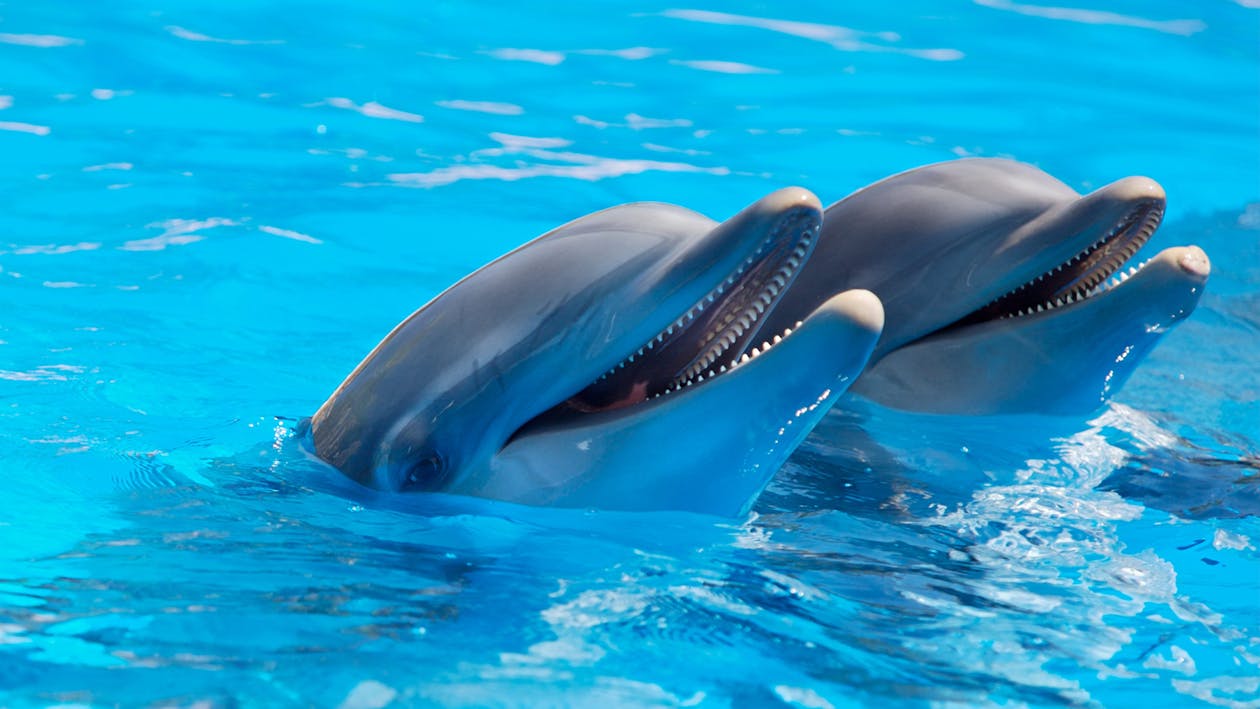Introduction
Dolphins are highly intelligent and social animals that have been captivating human attention for centuries. They are known for their playful and friendly nature, as well as their remarkable communication and problem-solving abilities. In this article, we will explore the fascinating world of dolphins, their characteristics, behaviors, and the role they play in the ocean ecosystem.
1: Introduction to Dolphins
Dolphins belong to the family Delphinidae and are part of the group of marine mammals that includes whales and porpoises. They are found in oceans and seas all over the world and are highly adaptable to their environments. Dolphins can range in size from just a few feet to over 30 feet long, with the most common species measuring between 6 to 12 feet in length.
Dolphins have a unique appearance, with a streamlined body, a pointed snout, and a dorsal fin on their backs. They have excellent eyesight and hearing, and they use echolocation to navigate and locate prey in the water. They are known for their playful and acrobatic behaviors, often jumping and flipping out of the water, and they can swim at speeds of up to 60 kilo meters per hour.
2: Intelligence and Communication
Dolphins are highly intelligent creatures with a complex social structure. They are known to be capable of problem-solving, self-awareness, and the use of tools. They also have a sophisticated communication system that allows them to communicate with each other in a variety of ways.
Dolphins use a complex system of clicks, whistles, and body language to communicate with each other. These sounds can travel for long distances underwater and can be used to convey a variety of messages, such as identifying themselves, finding food, and warning of potential danger. Researchers have also found evidence that dolphins use a type of language that is unique to their social groups, with different groups having their own distinct dialects.
3: Social Structure and Behavior
Dolphins are highly social animals and are known to form strong bonds with other members of their pod. They are also known to be highly empathetic and have been observed showing concern for injured or distressed members of their group.
Dolphins have a complex social structure, with pods ranging in size from just a few individuals to over a hundred. Within these pods, there is a hierarchy based on age, gender, and social status. Female dolphins are typically more dominant than males, and older dolphins are more dominant than younger ones.
Dolphins engage in a variety of behaviors that are thought to be related to social bonding and communication. These include rubbing against each other, vocalizing, and leaping out of the water. They also engage in play behaviors, such as chasing each other, and sometimes use objects such as seaweed or other marine debris to play with.
4: Ecological Role and Conservation
Dolphins play an important role in the ocean ecosystem, serving as top predators and helping to maintain the balance of the food chain. They feed on a variety of fish and squid, and in some cases, they have been observed working together to corral schools of fish into tight groups, making it easier for them to catch their prey.
Unfortunately, dolphins are facing a variety of threats, including habitat loss, pollution, and overfishing. In some parts of the world, dolphins are also hunted for their meat or captured for use in entertainment shows. As a result, many species of dolphins are considered to be at risk of extinction.
Conservation efforts are underway to protect dolphins and their habitats. This includes the establishment of protected marine areas and regulations on fishing practices that can harm dolphins. There are also efforts to reduce pollution and other human activities that can negatively impact dolphin populations.
Conclusion
Dolphins are remarkable creatures that continue to captivate humans with their intelligence, social behavior, and acrobatic displays. As top predators in the ocean ecosystem, they play a critical role in maintaining the balance of the food chain. However, they are facing numerous threats, including habitat loss, pollution, and overfishing.
It is essential that we continue to study and learn about these magnificent creatures and take steps to protect them and their habitats. Through conservation efforts, we can ensure that future generations will have the opportunity to experience the wonder of these intelligent ocean dwellers.
![In the Know with Informium: Discovering [The World] In the Know with Informium: Discovering [The World]](https://blogger.googleusercontent.com/img/a/AVvXsEgcDyR0p1ytrjUEjbVNRJ1Rt66C4X1HYJkQZjuSh_BLJNHQVjppjSqTkcbP2tqgWZ84RhZMkFxCHCC-SxGuMPnSww7DG8x0MVE6d7sDvaEGkbPJuvtq_uY2i7hHDjuprQUzeDt2QcAcWChEFl49Huojm3fLHYpSjoXabD75WmhgSI2yfCktm3WuB86PMQ=s150)
